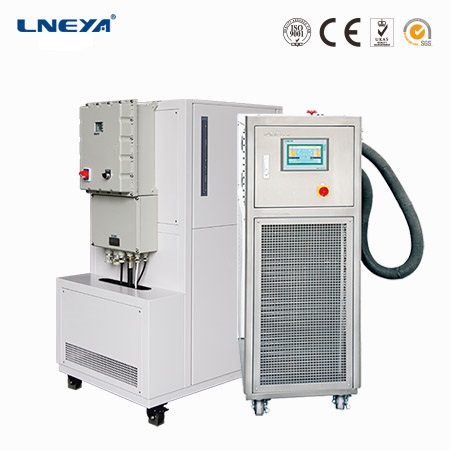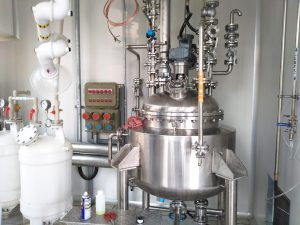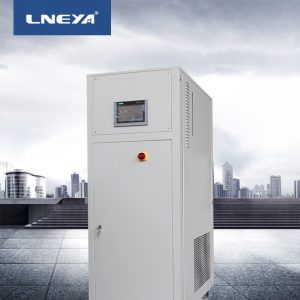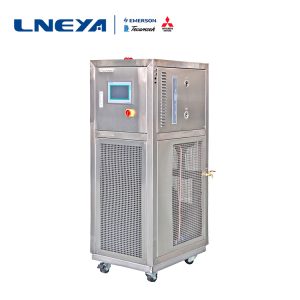Description détaillée de la réparation des vannes des machines intégrées à haute et basse température
The conventional high and low temperature integrated machine valve replaces the packing, and the main function of the packing is to prevent the working medium from leaking along the axial direction of the valve stem. In case of minor leakage, the packing gland can be tightened. If the leak cannot be eliminated, the packing should be replaced. When replacing, the valve stem must be screwed out to the end. Use the filler needle to pull out the old packing, then screw the prepared new packing in turn, and then tighten the gland.
In conventional high and low temperature integrated machine engineering, the valve core of a large diameter valve is sealed by a layer of babbitt or fluoroplastic. The back of the spool also has a layer of babbitt so that when the stem is rotated out of position, the working fluid can be sealed without leaking outward along the stem. After the valve is disassembled, first straighten the stem to deburr, then replace the valve’s babbitt alloy. At the same time, the valve seat should also be ground to make the valve core and the valve seat tight. For small cast steel or brass valve spools, the seal of this valve is obtained by a line of metal contact, hence the line seal. Because it is a wire seal, the valve seat and the valve core should be carefully ground to obtain a satisfactory sealing effect. After the valve is overhauled, the air tightness test shall be carried out in accordance with the relevant requirements.

The repair of the safety valve in the explosion-proof high-temperature integrated machine refrigeration system is also roughly the same as above, but since the babbitt alloy is soft, it is often difficult to return to the original position after the safety valve is operated once due to overpressure, so when the pressure is reduced to the closing pressure At the time, it is still not tight. In order to overcome this drawback, some products have changed the Babbitt alloy to a nickel-chromium-titanium (harder) alloy, or replaced with polytetrafluoroethylene.
The timely maintenance of conventional high and low temperature integrated machine valves can better help the operation of conventional high and low temperature integrated machines, so it is recommended to solve them in time.
Recommandations connexes
-
What is the temperature of the cryogenic cooling circulator?
1035The LNEYA cryogenic cooling circulator has a cooling temperature range from -125 degrees to -20 degrees. It adopts a computer cascade temperature controller and a PT100 temperature sensor, and the temperature control accuracy can reach ±0.1 degree...
Voir les détails -
Effect of cooling and heating temperature cycle during emulsification
1591Emulsification is the effect of a liquid in which even tiny droplets are evenly dispersed in another liquid that is incompatible with each other. Emulsification is a liquid-liquid interface phenomenon. Two immiscible liquids, such as oil and water...
Voir les détails -
Description de l'erreur de sélection de l'équipement de test du module de batterie
1034De nombreux fabricants de modules de batterie se méprennent sur l'équipement de test de modules de batterie de LNEYA. Il y a quelques erreurs dans la sélection du modèle d'équipement de test de module de batterie, alors essayez de sélectionner l'équipement de test de module de batterie. Évitez certaines mi...
Voir les détails -
Comment éviter un mauvais fonctionnement des circulateurs de chauffage et de refroidissement? ?
1062When the user runs the heating and cooling circulator, the operation needs to follow the instructions. Then, how to avoid unsuitable operation? LNEYA heating and cooling circulator has multi-function alarm system and safety function. It uses plate...
Voir les détails
 LNEYA Industrial Chillers Fabricant Fournisseur
LNEYA Industrial Chillers Fabricant Fournisseur













